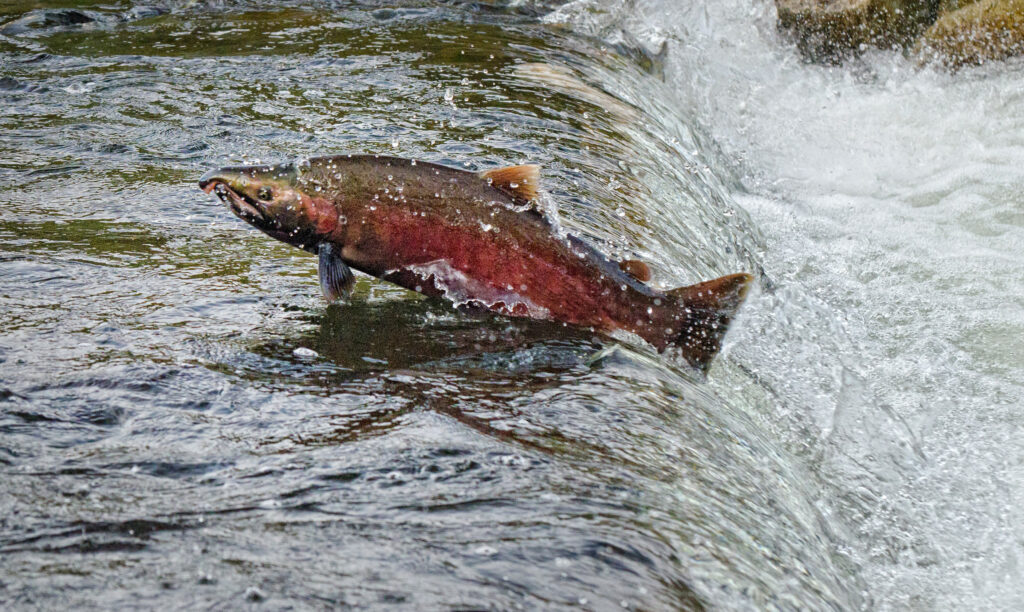In the late 1800s, a colonial land survey took place in what we now know as the lower Fraser River and what the Tsilqot’in People know as ʔElhdaqox—meaning Sturgeon River and referring to the prehistoric fish that traversed its waters.
The land surveyors, who were determining how the land would be divided among settlers for agricultural and familial use, also took note of different vegetation communities—something that caught the attention and interest of researchers at the University of British Columbia (UBC) in the 1980s.
UBC researchers used information from the surveyors’ notebooks to go back in time and create a map of the floodplain vegetation that existed during the late 1800s.
Now, nearly 40 years later, another team at UBC has successfully used these same findings to conduct a study which found that up to 85 percent of historical salmon habitat in the lower Fraser River has been lost or blocked by human-made barriers.
Riley Finn, lead author of the study and a research assistant at the Martin Conservation Decisions Lab at UBC, says these pre-existing findings gave insight into their study. “It gave us an understanding of the historical baseline that existed, how much habitat has been lost, and what populations of salmon have been impacted.”

Reasons for the loss of historical salmon habitat
Riley, who is also a research associate at the Raincoast Conservation Foundation, shares that there are various reasons for salmon decline like: transfer of diseases to wild salmon caused by commercial fish farming; ocean warming caused by climate change; habitat displacement caused by urbanization; and habitat obstruction caused by human-made barriers like dams, dikes, pump stations, road culverts and floodgates.
According to Riley, these human-made barriers stop salmon from accessing streams in the lower Fraser River where they can spawn and rear their young, and complete their life cycle.
While some barriers can be removed, others need to be upgraded to be more fish-friendly. For example, floodgates with heavy cast iron doors with hinges can be replaced with ones that open and close with the tide.
